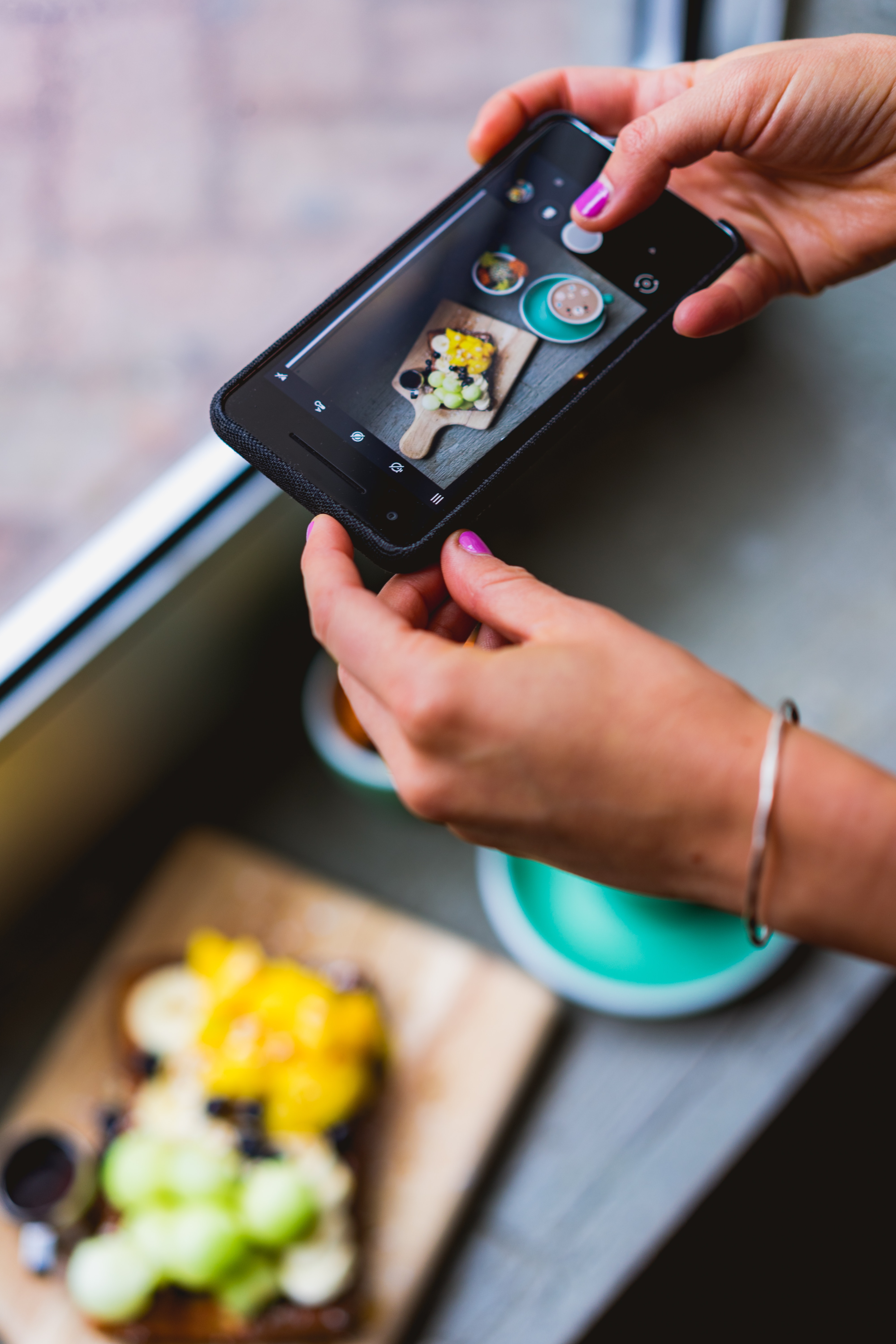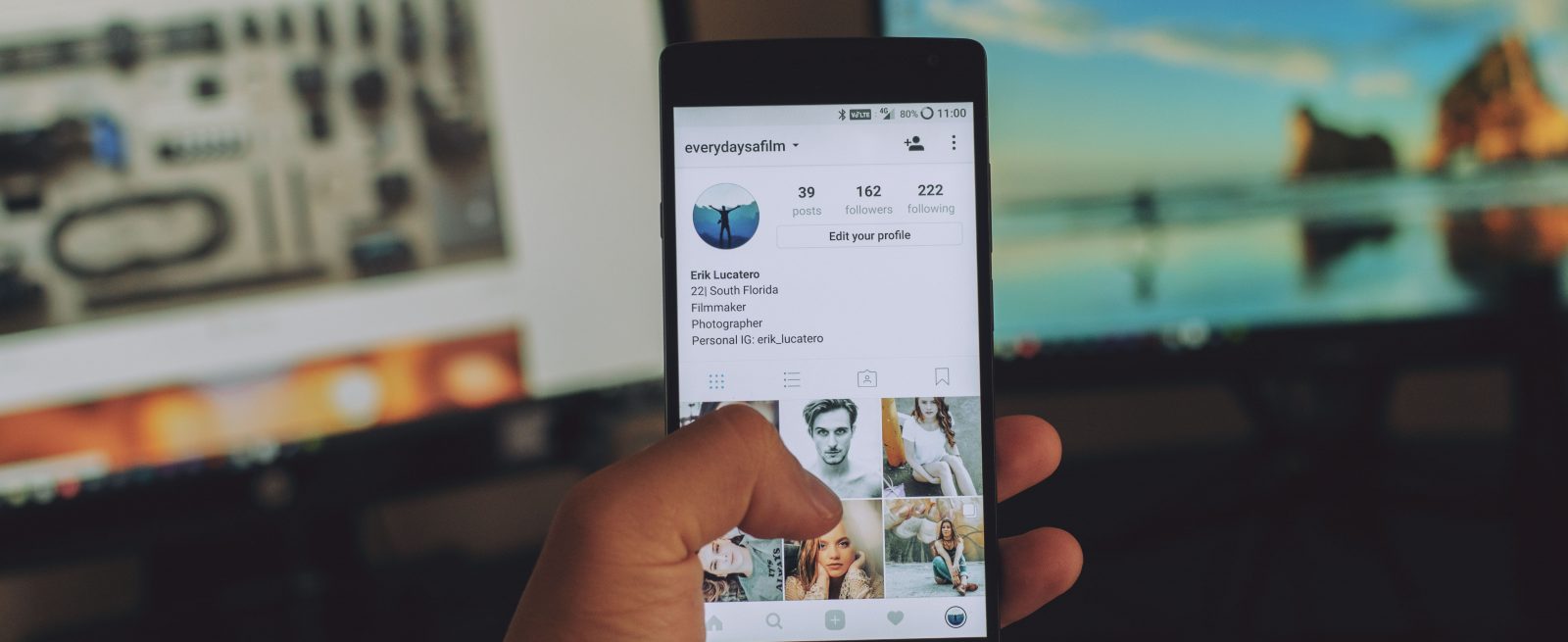Restaurant Social Media: Yes, You Can!
6 Min Read By Amber Mullaney
When Instagram launched nine years ago, food photography took off. We now see fewer people raising a toast or clasping hands in prayer; the new pre-meal ritual has become — snap, post and dig in.
To understand the depth of those who ‘gram their food, consider a 2017 study by consumer intelligence firm Maru/Matchbox. The company’s researchers found that roughly 69 percent of millennials reach for their smartphone before grabbing a fork.
Our photo-obsessed social rituals have captured dishes from every dining table around the globe. Some diners have even become devoted Insta-eaters with preference for sharing a photo over sharing a dessert. Consequently, this new course of action has prompted disdain from friends and family members who just want to eat their food instead of record it for all eternity.

The groundswell of social media sharing of drool-worthy dishes has served up new options for promoting restaurants. As a result, this sharing is driving new business. Not surprising, last year Technomics found that social media has become the most common platform for restaurant marketing with 63 percent of restaurants using it. Those operators who make social media an integral part of their marketing program can ride this social wave that can boost their bottom line. Those who don’t may crash before the tide shifts.
DIY Social Media
If the thought of creating, curating, managing, engaging, and monitoring your social media efforts makes your eyes glaze over like a box of Krispy Kremes, then outsourcing may be your best move. But even with a decision to outsource, much is gained from at least gaining a firm understanding of all the moving parts of social media, including its tool variety and best strategies for implementation.
At minimum, this cursory knowledge offers you enough to go on when hiring an agency to handle your social media efforts, and firing the firm when outcomes are not acceptable.

Social media marketing of a restaurant or multiple restaurants is not difficult. By taking small actionable steps, you can quickly gain a foothold in building your restaurants’ social media presence and begin attracting a sizeable following. With this effort, you will obtain the following benefits:
- Raise yourrestaurant’s brand awareness
- Discover trends that keep you ahead of the demand
- Obtain early feedback analysis of marketing efforts
Five Social Media Best Practices
Be seen, be trusted, be shared: When accomplished, these three goals will maximize your social media efforts. Fall short of these goals and you will have limited success in driving customers to your restaurant. When implementing a social media strategy, you will be well on your way to achieving your aim by following these best practices.
Don’t Bite Off More than You Can Chew: One of the first social media tenets to follow is to pick one network channel. Sign up, learn it, master it, then move on to the next channel. Building your audience carries certain responsibilities and one of those is to post regularly. This effort keeps your audience engaged. Post sporadically and that valuable audience will lose interest.
Begin at the Beginning: You know where you are located, but not all your diners do. Set up your Facebook, Twitter, Instagram, Pinterest or other social media pages by including the essentials for those who want to engage with you.
First, add your address, hours, city and state, along with a link to your other locations. Second, include your menu. Third, add the type of cuisine you serve along with the audience that you attract: “great for families” “wonderful party place” “take out available” are just a few of the ways to highlight your specific restaurant offerings. Finally, set your page to allow reviews. Monitor those reviews and respond quickly to both songs of praise and the occasional squawks.
It’s Not All About You: A common problem with newbie social media entrants occurs when they grab the virtual megaphone and start talking about the “awesomeness” of the business and begin promoting the latest menu items with posts that tout “buy this."
Contrary to how many businesses conduct their social media efforts, being thoughtful, strategic and purposeful will gain many more followers and interest than constantly pushing out highly promotional material. Not every post should be a call-to-action. Start a conversation; build your following with genuine relationships to help your audience connect with your brand.
No One Whistles a Symphony: It takes an orchestra. Social media is truly a team sport. Happy employees are often your best players (aka: brand advocates) on social media. Most everyone has social accounts these days, and the majority will be active on those networks.
Cultivate your employee’s social sharing and it can become your strongest asset. To facilitate more individual sharing, create brand guidelines, then host a short meeting to review your brand positioning. This meeting can help them understand proper communication and thus feel more confident when sharing about the company.
Honest Effort Produces Lessons: The great thing about social media is with the immediate trial and error feedback. Spend a marketing wad on a print ad and it may take you months to determine its value. Instigate a social marketing campaign and you’ll receive the instant feedback in the way of responsiveness, sharing, and engagement from your audience.
It’s easy to determine the return on investment from social media because all the major social networks have analytics dashboards that are ripe for data mining. Add in a few tools and you will be well on your way to becoming a social media expert-in-training.
Good Luck is the Residue of Preparation: Holidays, vacations, big restaurant shows, and illness. Let’s face it, things get in the way. So that you don’t fall behind on your social media posting, one of the best practices is to stockpile content. When things are slow in your restaurant business, that’s the best time to start creating evergreen content that can be posted when life becomes considerably more chaotic.
Two Social Media Tools You Can’t Live Without
After you have chosen your first social network to explore and learn, create a unique hashtag for your restaurant. This word or phrase preceded by a hash sign (#) helps boost awareness about your activity. When your followers share content you post which includes your hashtag, more people will see it. This hashtag also helps you track your social media performance. Once you have a hashtag, you can measure the number of hashtag mentions, number of interactions, and your social media reach. Other clever tools include:
- Social media schedulers— managing your social media process is made easier through scheduling, and some great platforms exist to help you streamline those efforts. Hootsuite, Sprout Social, and Post Planner are just three social scheduling platforms that you’ll want to evaluate. You can curtail all the bouncing back and forth between network platforms by posting to one platform that can schedule out your posts on predetermined days and times. Learn about top-performing tweets and posts and then get hints on how to repeat and recycle the best of your content.
- Social media calendars— most of the major social media platforms include a method of creating a social media calendar. The one that’s been around the longest is called Hootsuite. Its robust content features include scheduling, as well as RSS integration. Other platforms that will help with your post planning are CoSchedule, eClincher, and Buffer, to name a few.
Best Social Media Insights
Since you are jumping into social media marketing now, you can benefit from the insights of those who have gone before, and have already been through the trial and error period. Learn from those who have gone before and you can quickly improve your social expertise. Here are the best insights culled from other restaurants:
- Best social media networks for restaurants — Facebook is a necessity for restaurants in 2019. About 1.56 billion people log into Facebook daily and five new profiles are created every second. That’s, well, a behemoth that restaurants can’t ignore. If you must only choose one social network, start here. Other channels that provide visual engagement include Instagram and Pinterest.
- Best time to post— To get the highest traffic for your post, you’ll want to post mid-week between the hours of 1 and 3 p.m. However, a Bit.ly blog shows that a Facebook posts at 7 p.m. will provide more clicks on average than posting earlier in the day or later at night. It should not be surprising that the best days to post for restaurants are on Thursdays and Fridays when people are searching for weekend dining options.
- Best content to post— Restaurants have a wide range of content to share, everything from customer-generated reviews and employee spotlights to new menu items and exclusive coupons for social followers. Visual content ranks high, as well as content that is meaningful to your audience, like exclusive coupons.
- Best trick of the trade — Jump on a trend. If you see something trending in the news, whether it be weather, food, culture-related, start thinking outside the box as to how your restaurant can capitalize on the trending topic. Your social channel reach will be immediately elevated. More eyeballs means more business.
As with anything new, a social media learning curve is inevitable, however, by following the insights, best practices, and learning about the available tools that offer you more efficiencies, you should be hearing the cha-ching of new customers in no time.


